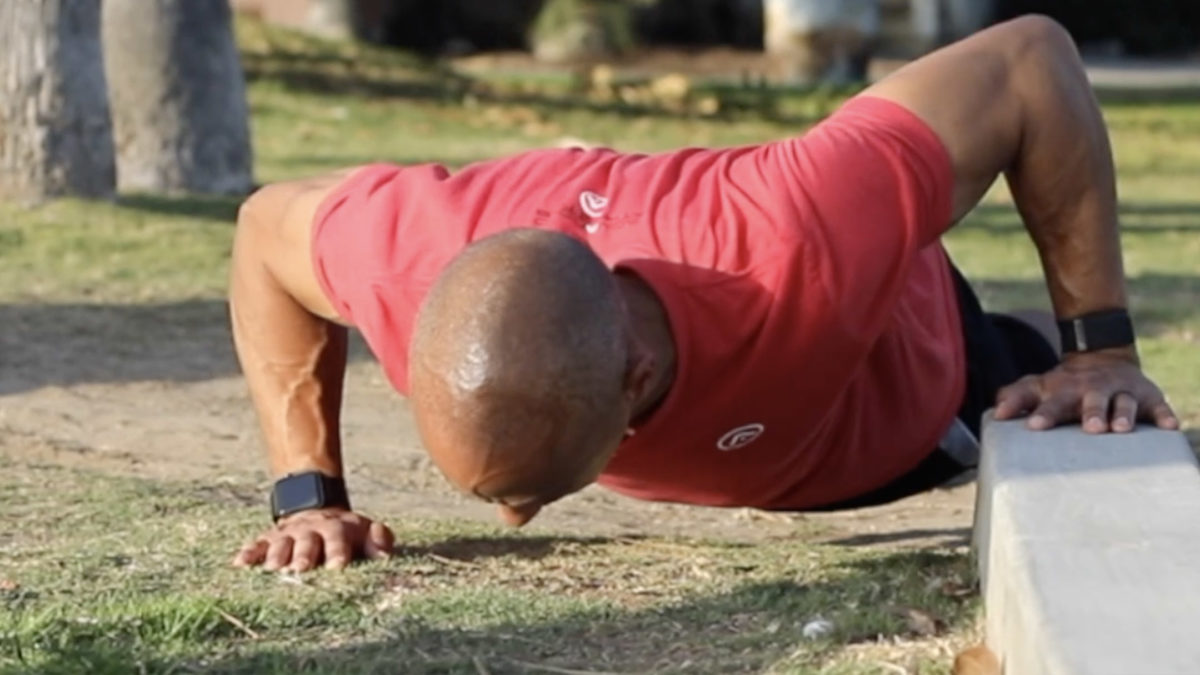When was the last time you made a change to your exercise routine? And why did you choose to make that change at that time?
By change, I mean having a planned variation of programming to progress (move forward) or regress (move backward), based on your needs.
Your responses are important because they have a giant impact on your training results, now and in the future.
Many athletes will avoid answering the when and why questions. Because they don’t always pay attention to, or grasp, the necessary details when it comes to making effective change. I don’t want you to be one of them.
Now is your time to take ownership over your results, how fast they come, and how long you can sustain them. The way to do this, again and again, is by having a results-driven process and approach to change based on your needs.
Your needs consist of factors such as your:
- Goals
- Genetics
- Experience
- Physical health
- Mental and emotional state
- Nervous system adaptability
- Timetable of present and upcoming events
These are the same factors that go into designing each program and the changes that you make along the way.
As a strength coach, I make frequent adjustments to my clients programs. And I base that on a combination of experience, art, and science. But the backbone is always going to be science.
The subject of “science” can be intimidating for most people. It’s depth of information is daunting and this is a biggest reason most people avoid diving in and using it to their benefit.
To get you “over the hump,” let’s focus first on the process of the “why” and “when,” as we consider the factors listed above. Starting with goals.
Goals
You want to base any program change on a defined measurable goal.
If the goal is not clear, and you don’t establish a baseline at the outset, then it’s impossible for you to measure your progress. So any change you make will be baseless.
As an example, we’ll use the overarching goal to become an Athlete For Life.
Take this goal and go deep with it – what will that look like in your life as you look into the future? What activities are you doing, and how do you feel and look doing them? Paint that picture from a physical and emotional standpoint.
From there, work backwards and define all the standards that you will need to have in place to be successful.
Rank those standards in terms of those that haves the most significance when it comes to achieving your goal. It will be a combination of fitness qualities that enhance your athletic skills and ability that include:
- Speed
- Power
- Agility
- Balance
- Mobility
- Strength
- Quickness
- Work capacity
- Body composition
Select tests to measure your baseline on each. The selection and administering of these tests are best done by a fitness professional. But you can also learn more from resources from the NSCA and Functional Movement Systems.
Then, take the baseline data to set measurable, short-term goals for each area in support of support your long-term goal.
And re-test yourself on a regular basis. Your results should factor into when and why you make a change to what you are currently doing.
Genetics
Your body type (ectomorph, mesomorph, endomorph) has a big effect on your potential to reach your goal. And your genes also affect your percentage of fast-twitch, medium twitch, and slow twitch muscle fibers, which affect your athletic performance.
Understanding these distinctions is critical to support you in achieving your goal.
So it’s important to know that you may need to spend more or less time doing certain exercises, moves, activities to improve certain qualities. For example, if you’re an ectomorph, like me, you’ll have a harder time putting on muscle than a mesomorph would. That’s why I revisit hypertrophy (muscle building) training methods more frequently.
Experience
When you have years of experience using proper form and technique with an exercise, you are in a good position for change.
Each time you introduce a new way to do an exercise, or a new exercise altogether, it takes you time to grasp the intricacies that make it effective.
That impacts the amount of time that you would need to spend with it. And the more complex the change or new exercise, the more time you’ll need to master the technique and proper form.
Your potential benefit from the amount of time you put in is relative to whether you’ve been doing things right or wrong.
Most athletes have years of experience working out. But they’re often missing some key ingredients when it comes to proper form, technique, and muscle recruitment.
Making progressions (adding weight, increasing reps or intensity, changing tempo, adding a new exercise) should happen only when these ingredients are on point.
If you struggle with any of these ingredients, then you need to make a change, but that change is towards regression (reducing weight or reps, modifying an exercise).
So consider how your exercise habits and experience impact when and why to make changes.
Read my next post, Part 2, where I cover the remaining four factors: your physical health; mental and emotional state; nervous system adaptability; and timetable of current and upcoming events.
Until then, stay athletic.
Your coach,
Adam
——-
If you’ve not yet checked it out, click on this link to learn about Search and Rescue Mobility, my structured, thorough mobility program for your lower legs. In just 10 minutes per day you can improve your agility and help prevent injury. For a limited time, I’m offering SARM for just $8.95, that’s 55% off the regular price.

